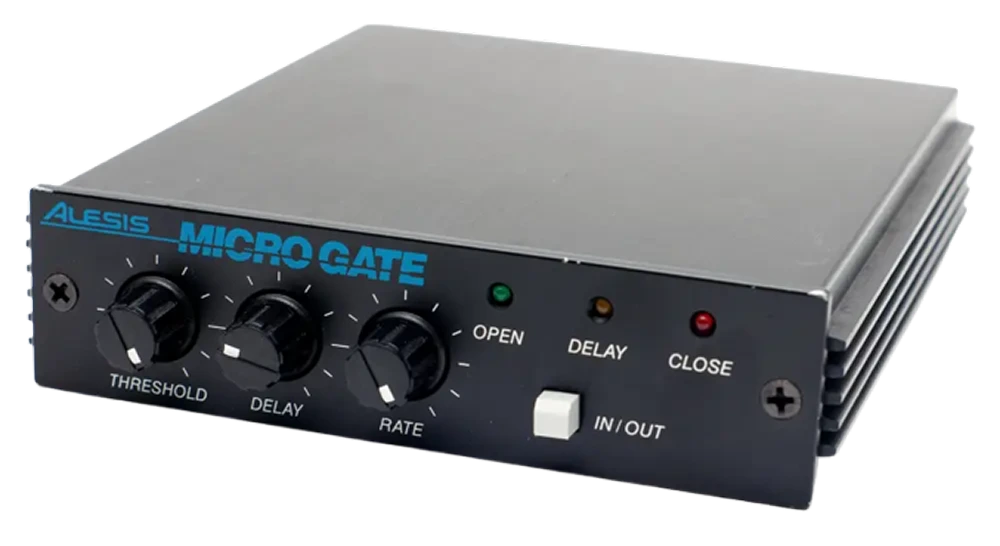Noise Gate
A noise gate is an audio processing tool that enables signals above a predetermined threshold to pass while reducing those below it. Discover how noise gates can enhance audio clarity by reducing unwanted background noise in your recordings.

When to Use Noise Gates
Noise gates are usually used in the following situations:
- Reducing Background Noise: Ideal for minimizing unwanted sounds in recordings, such as the hum of an air conditioning unit.
- Eliminating Leakage: Useful in live recording environments to prevent audio bleed between instruments.
Gating sampled drums and instruments typically offers no advantages since there is usually no noise or leakage between the different instruments.
Noise Gate Controls
The various controls on a noise gate, such as Threshold, Attack, Release, Hold, and Range, offer detailed manipulation over how the gate responds to the incoming signal. Understanding these parameters enables you to tailor the effect, ensuring that only the desired audio is heard while minimizing distractions from unwanted noise.
Threshold
Sets the level at which the gate opens and closes. Signals above this level pass through, while those below are attenuated.
Attack
Determines how quickly the gate opens, measured in milliseconds. A fast attack allows for a more immediate response to incoming signals.
Release
Controls how quickly the gate closes after the signal falls below the threshold, also measured in milliseconds. This setting affects how natural the sound feels when the gate disengages.
Hold
Specifies the duration the gate remains open after the signal drops below the threshold. This prevents abrupt cut-offs and ensures that decaying sounds are not truncated.
Range
Adjusts the level of the signal that falls below the threshold instead of muting it completely. This feature allows for more nuanced control over the audio dynamics.
